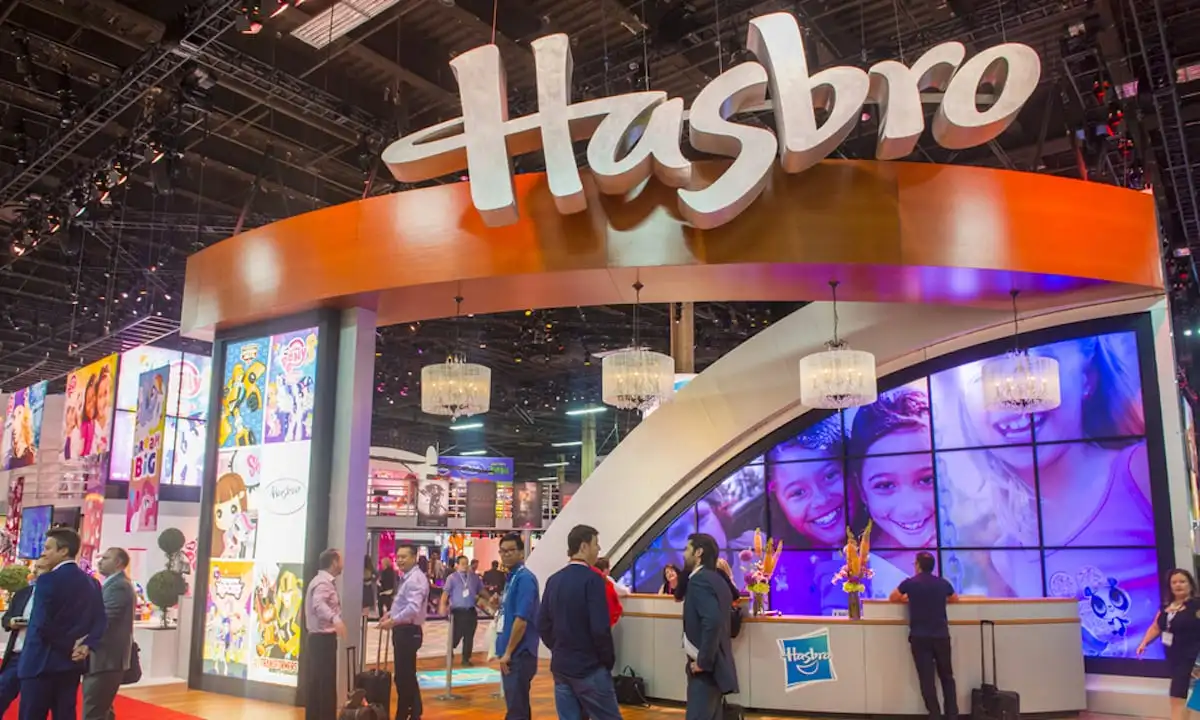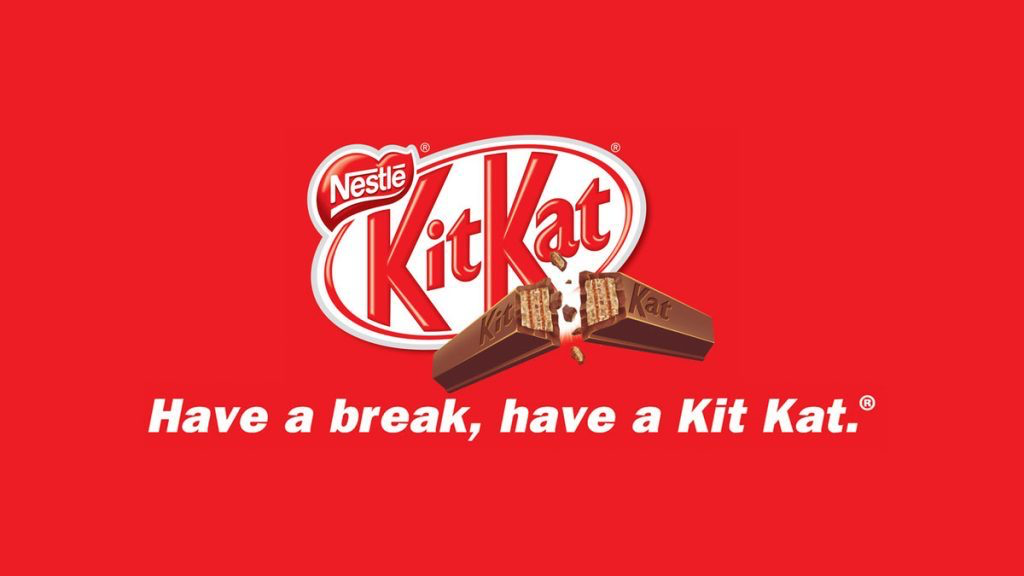Hasbro is more than just a toy company; it’s a cornerstone of childhood memories. Founded in 1923, Hasbro’s story is a testament to the enduring power of play. Fueled by a mission to entertain and connect through the power of storytelling and play, Hasbro boasts a legendary portfolio of brands that have transcended generations and become cultural icons. From the thrill of NERF battles to the imaginative worlds of My Little Pony and Transformers, Hasbro’s creations have sparked countless adventures and fueled the fires of creativity in children around the globe.
This rich legacy began with humble beginnings. Founded in Pawtucket, Rhode Island, by the Hassenfeld brothers, Hasbro initially focused on textiles and other household products. However, recognizing the potential of the toy market, the brothers pivoted their focus in the 1930s, introducing their first children’s products. This shift in direction proved to be a defining moment, setting the stage for Hasbro’s meteoric rise in the toy industry.
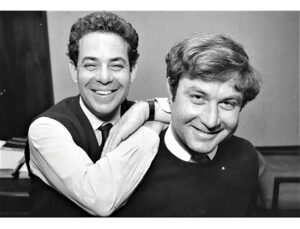
Throughout the mid-20th century, Hasbro solidified its position as a leader in innovation and play. They introduced iconic brands like Mr. Potato Head (1952), Play-Doh (1956), and GI Joe (1964), each one capturing the imagination of a generation. These weren’t just toys; they were springboards for storytelling, role-playing, and imaginative adventures. Whether molding fantastical creations with Play-Doh or embarking on daring missions with GI Joe, Hasbro’s toys fostered not only entertainment but also social and cognitive development in children.
Hasbro’s dedication to storytelling extended beyond stand-alone toys. Recognizing the power of popular culture, the company began acquiring licenses for beloved characters, further enriching their brand portfolio. The introduction of Star Wars figures in 1977 proved to be a cultural phenomenon, forever linking Hasbro to the world’s biggest franchises. This strategic move not only capitalized on existing fan bases but also introduced these iconic stories to a new generation of children. The success of Star Wars paved the way for future partnerships with other pop culture giants like Marvel and Disney, further solidifying Hasbro’s place at the forefront of children’s entertainment.
Innovation has always been a cornerstone of Hasbro’s success. The company has consistently pushed the boundaries of toy design, incorporating cutting-edge technology and interactive features. From the interactive furby of the 1990s to the augmented reality experiences of today, Hasbro’s toys continue to evolve, keeping pace with the ever-changing interests and technological landscape of childhood.
Looking ahead, Hasbro remains committed to its core mission: to entertain and connect through the power of play. The company actively seeks to create inclusive and diverse play experiences that cater to a wide range of ages, interests, and abilities. Through its vast portfolio of beloved brands, innovative designs, and dedication to inclusivity, Hasbro continues to light up lives, one playtime at a time.
Target Audience of Hasbro
Hasbro casts a wide net to capture multiple audiences. While children are the core who play with the toys, Hasbro understands that the buying power lies with parents and guardians. They target these adults with nostalgia, appealing to their own childhood memories of beloved Hasbro brands like My Little Pony or Transformers. This strategy creates a connection – parents are more likely to buy something they enjoyed as a child.
Beyond that core family unit, Hasbro also reaches out to teens and collectors with specific product lines. They might target fans of superhero movies with special action figures or create collectible card games based on popular franchises. Ultimately, Hasbro aims to be a part of the play and entertainment experience across generations.
Marketing Strategies of Hasbro
Hasbro is a multinational toy and board game company known for iconic brands such as Transformers, Monopoly, Nerf, and My Little Pony. Its marketing strategies are diverse and dynamic, tailored to target different demographics and market segments. Here’s an overview of some of the key elements of Hasbro’s marketing strategies:
1. Nostalgia and Brand Legacy
Hasbro’s marketing strategies are a masterclass in understanding the power of emotional connection. One of their most effective tactics is leveraging nostalgia and brand legacy. This approach taps into the warm fuzzy feelings associated with cherished childhood memories, creating a powerful link between past and present.
Take the recent relaunch of the classic Furby toy for example. The reimagined Furby, equipped with modern technology and features, reignited excitement for a generation of parents who grew up interacting with the original furry friend. Similarly, Hasbro’s recent television commercials featuring the iconic NERF brand incorporated winks and nods to classic advertising campaigns from the 1980s and 1990s. These commercials leveraged the familiar visuals and catchphrases to spark a sense of nostalgia in parents, while simultaneously introducing a new generation of children to the joys of NERF battles.
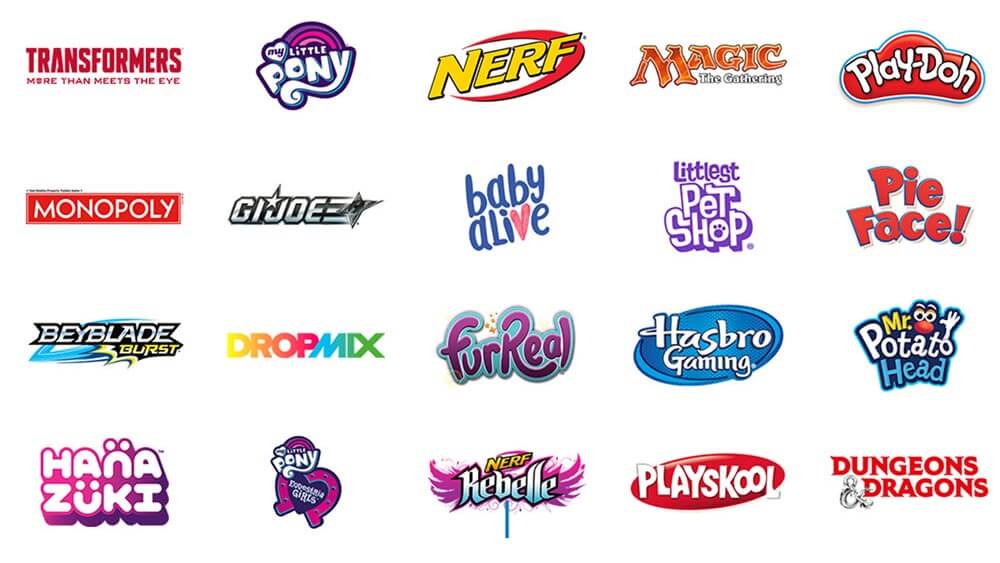
The magic of nostalgia extends beyond simply reintroducing classic toys. Hasbro excels at weaving brand legacy into the fabric of their marketing efforts. Their recent “Transformers: Generations” line of figures caters directly to fans who grew up with the original cartoons and toy lines. These figures capture the essence of the classic characters while offering a more detailed and intricate design, appealing to the collector in adult fans while introducing the Transformers universe to a whole new generation of children. By acknowledging and celebrating their rich brand history, Hasbro fosters a sense of community and shared experience between parents and children, strengthening their connection to the brand as a whole.
2. Licensing and Partnerships
Licensing agreements are a key marketing strategy for Hasbro. They allow Hasbro to leverage the popularity of established characters and franchises from other companies. This is evident in their deals with Lucasfilm (Star Wars and Indiana Jones) and Saban Brands (Power Rangers). By creating toys and games based on these beloved properties, Hasbro reaches a wider audience and boosts sales. They also have digital gaming partnerships with companies like Electronic Arts, Activision, and Ubisoft, further extending their reach into the gaming world.
Hasbro also uses partnerships to create unique product lines that appeal to specific demographics. For example, their Peppa Pig collaborations with H&A and JoJo Maman Bébé target parents of young children with Peppa Pig-themed clothing, bath products, and more. This strategy allows Hasbro to tap into new markets and keep their brands relevant to different consumer segments.
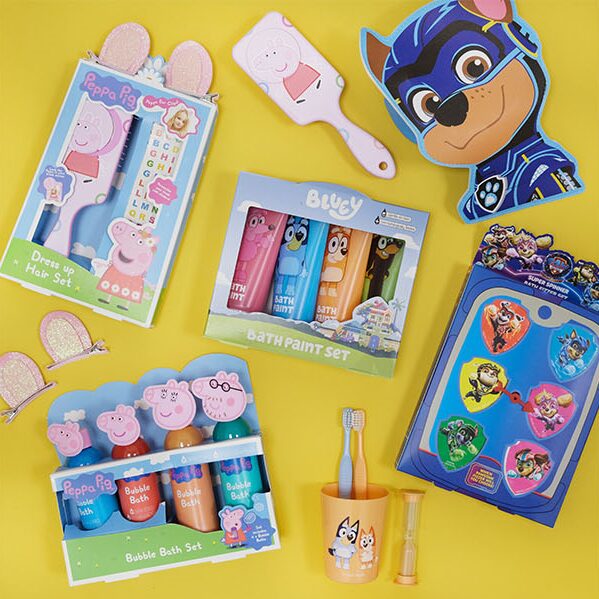
The vast number of licensees (over 1,800) demonstrates the power of this approach. By partnering with a wide range of companies, Hasbro can ensure their products are available in a variety of retail locations and cater to diverse customer preferences. This broad reach strengthens their brand recognition and market position.
3. Multi-Channel Distribution
Hasbro leverages a multi-channel distribution strategy to ensure their toys and games reach every corner of the market. This comprehensive approach involves a variety of channels, each offering unique advantages. Their largest channel is wholesale stores, which carry a wide selection of products from various brands. This broadens Hasbro’s reach and ensures their toys are readily available to a massive customer base.
However, Hasbro isn’t solely reliant on traditional channels. They’re heavily invested in building a robust direct-to-consumer platform anchored by Hasbro Pulse and D&D Beyond. This allows them to control the customer experience, gather valuable data on buying habits, and foster stronger brand loyalty. Their goal is to transform this direct channel into a billion-dollar business by 2027, demonstrating their commitment to this growing market.
Furthermore, Hasbro actively expands into new markets through strategic acquisitions and partnerships. Acquiring established distribution channels like Tonka Corp. and Nomura Toys Ltd. grants them immediate access to local infrastructure and expertise. This facilitates the development of market-specific toys and the optimization of distribution networks for international success. Their expansion efforts, coupled with their multi-channel approach, solidify Hasbro’s global dominance in the toy industry.
It’s important to note that multi-channel distribution isn’t without its challenges. Managing inventory across various channels, meeting seasonal demands, and ensuring accurate stock levels can be complex. However, the benefits of increased reach, improved customer interactions, and a more robust supply chain outweigh these potential drawbacks. By effectively navigating these challenges, Hasbro positions itself for continued growth and market leadership.
4. Product Innovation and Development
Hasbro prioritizes product innovation and development as a core marketing strategy. A dedicated research and development (R&D) team works tirelessly to create engaging toys and games that resonate with both children and adults. This team utilizes cutting-edge tools like freeform modeling software, allowing for rapid prototyping and risk-free experimentation. Once a concept proves successful, Hasbro’s design and manufacturing team takes the reins, collaborating with suppliers to bring the innovative product to life.
Hasbro’s approach to product innovation is multifaceted. They actively embrace digital trends, integrating technology into their offerings with digital games and products. This caters to the ever-growing preference for digital and social media experiences among younger generations. Partnerships with other companies further fuel innovation, allowing Hasbro to leverage expertise and expand market reach.
Beyond simply creating new toys, Hasbro fosters brand growth through innovative strategies. They’ve successfully expanded their established franchises beyond familiar territories, reaching emerging markets with culturally relevant products. This strategy ensures their beloved brands like Power Rangers, Transformers, NERF, Play-Doh, Clue, Dungeons & Dragons, and Magic: The Gathering remain fresh and appealing to a global audience. By constantly innovating and adapting, Hasbro ensures its products stay at the forefront of the toy industry.
It’s important to note that product innovation is an ongoing process. While Hasbro boasts a successful track record, they continuously strive to develop new and exciting play experiences. This commitment to innovation is a significant driver of their long-term success.
5. Social Media
Hasbro leverages social media to create a vibrant online community around its beloved brands. Their strategy incorporates product promotion, user-generated content (UGC), and interactive campaigns. This multifaceted approach fosters brand loyalty and excitement.
Hasbro utilizes its seven core brands, including Transformers, Nerf, and My Little Pony, to run engaging campaigns on platforms like Facebook. These campaigns encourage fan participation and generate buzz. They also actively encourage UGC through contests and challenges. By prompting fans to create artwork, videos, and stories featuring Hasbro products, they not only promote their toys but also celebrate the creativity of their fanbase. This two-pronged approach strengthens brand identity and fosters a sense of community among fans.
Instagram Strategy of Hasbro
Hasbro leverages Instagram to strategically announce new products and engage with its audience. Their primary account, @hasbro with nearly 400,000 followers, serves as a launchpad for exciting reveals. They’ve used this platform to generate buzz around new product lines like the Hasbro Selfie Series and classic games like Clue.
Interestingly, they appear to utilize a secondary account, @hasbropulse, specifically for the Hasbro Selfie Series. This suggests a targeted approach, potentially allowing them to tailor content and promotions to a more niche audience interested in that particular product line.
Facebook Strategy of Hasbro
Hasbro leverages Facebook as a cornerstone of their social media strategy, boasting a robust presence for their seven core brands. This includes Transformers, Nerf, Monopoly, and My Little Pony, each with dedicated pages that have collectively garnered over 20 million fans. These brand pages aren’t simply static billboards; they’re hubs for interactive campaigns that actively engage the audience.
By sharing teasers, behind-the-scenes content, and fostering conversations, Hasbro fosters brand loyalty and excitement. This approach not only keeps fans informed about upcoming products but also builds a sense of community around their beloved brands. Facebook provides Hasbro with a powerful platform to connect with their audience on a deeper level, driving brand awareness and engagement.
6. Promotional Campaigns and Events
Promotional campaigns and events are a linchpin of Hasbro’s marketing strategy, allowing them to connect with a wide audience. This approach targets children, movie fans, and adults, effectively reaching each demographic through creative advertising, strategic partnerships, and engaging social media initiatives.
One key tactic involves creating large-scale, global experiences that bring their iconic brands to life. For instance, the Play-Doh imagination tour served to ignite creativity and encourage families to bond through play. Similarly, global events built around the Transformers franchise cater to movie buffs, giving them a chance to step into the world of their favorite characters. These interactive experiences go beyond promoting specific products; they cultivate excitement and a sense of community around Hasbro’s brands.
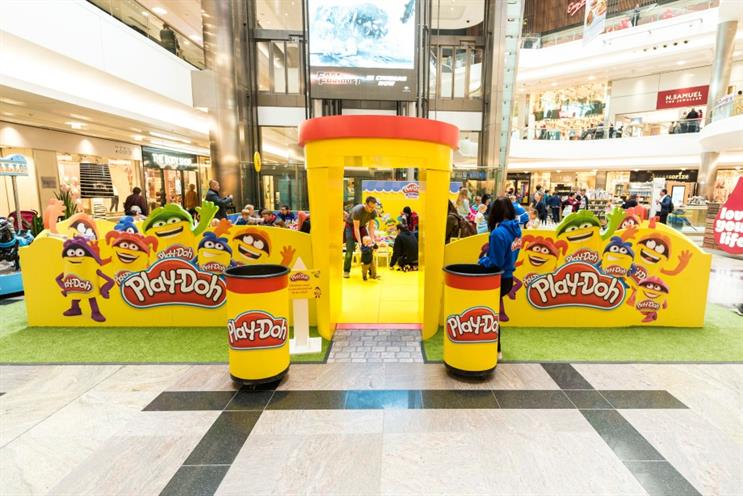
Hasbro takes a responsible approach to marketing, prioritizing the safety and age-appropriateness of their products and entertainment content. They achieve this through stringent controls, ensuring all marketing materials meet these high standards. This commitment extends to their licensing partners as well, guaranteeing all marketing aligns with their responsible approach. This focus not only safeguards children but also builds trust with parents, a crucial demographic for Hasbro’s success.
Examples of successful campaigns include the #TimeToPlay initiative by Hasbro Gaming, which tugs at parents’ hearts by reminding them of the importance of playing with their children. Additionally, their partnership with Kingsmen Creatives and Kilburn Live in 2019 demonstrates the power of strategic collaboration to revitalize a brand, such as the ever-popular Nerf blaster line. By combining creative campaigns, strategic partnerships, and a commitment to responsible marketing, Hasbro continues to reign supreme in the toy and game industry.
Overall, Hasbro’s marketing strategies are characterized by a combination of brand-building efforts, innovation, digital engagement, and a strong focus on consumer experience and market trends. By continually evolving its approach and staying attuned to the needs and preferences of its target audience, Hasbro maintains its position as a leading player in the global toy and entertainment industry.
Marketing Mix of Hasbro
Hasbro understands the power of a well-crafted marketing mix. The marketing mix, also known as the 4Ps, is a framework that encompasses the four key elements of marketing strategy: Product, Price, Place, and Promotion. Let’s delve into how Hasbro strategically utilizes each P to achieve marketing success.
1. Product:
Innovation is King: Hasbro prioritizes research and development, constantly churning out new and engaging toys and games. They leverage freeform modeling software to experiment freely and ensure their products resonate with both children and adults. This commitment to innovation keeps their offerings fresh and exciting.
Brand Powerhouse: Hasbro boasts a robust portfolio of established brands like Transformers, Nerf, Monopoly, and Play-Doh. They leverage these brands to create successful product lines that cater to diverse interests and age groups.
Market Specificity: Understanding that different markets have unique preferences, Hasbro tailors product lines to specific regions. This ensures cultural relevance and maximizes product appeal in international markets.
2. Price:
Competitive Pricing: Hasbro adopts competitive pricing strategies to ensure their products remain accessible to their target audience. This allows them to maintain market share while still generating healthy profits.
Value Pricing: They emphasize the value proposition of their products. This focus goes beyond just the price tag, highlighting the quality, play experience, and potential for imaginative play that Hasbro toys offer.
Price Differentiation: Hasbro employs a tiered pricing approach. Simpler toys might have lower price points, while feature-rich or complex games may have higher prices to reflect the added value they offer.
3. Place:
Multi-Channel Distribution: Hasbro leverages a comprehensive distribution network to ensure their products are readily available to consumers. This includes wholesale stores, direct retail stores, online marketplaces, specialty stores, and their own e-commerce platform, Hasbro Pulse. This multi-pronged approach maximizes product availability and caters to diverse buying preferences.
Strategic Expansion: Hasbro actively expands into new markets through acquisitions and partnerships. This allows them to establish distribution channels in new regions and capitalize on emerging markets.
Global Presence: By strategically utilizing various distribution channels and tailoring products to specific regions, Hasbro has achieved a global market presence, making their toys and games accessible to a worldwide audience.
4. Promotion:
Promotional Campaigns and Events: Creative advertising, strategic partnerships (like those with Kingsmen Creatives and Kilburn Live for Nerf), and social media engagement are all key components of Hasbro’s promotional efforts. They also create large-scale events like the Play-Doh tour to generate excitement and brand loyalty.
Social Media Savvy: Hasbro actively utilizes social media platforms like Facebook and Instagram to connect with their audience. They share product announcements, engage in conversations, and run interactive contests to build a strong online community around their brands.
Responsible Marketing: Understanding the importance of protecting children, Hasbro implements strict controls to ensure their marketing materials are safe and age-appropriate. This commitment extends to their licensing partners as well. This responsible approach fosters trust with parents, a crucial factor in their success.
Partnerships for Expansion: Strategic acquisitions like Tonka Corp. and Nomura Toys Ltd. grant Hasbro access to established distribution channels and local expertise. This facilitates the development of market-specific products and fuels their global expansion.
In conclusion, Hasbro’s mastery of the 4Ps is a significant driver of their marketing success. By strategically developing innovative products, implementing competitive pricing models, ensuring widespread availability through a multi-channel distribution network, and crafting engaging promotional campaigns, Hasbro remains at the forefront of the toy and game industry, captivating the imaginations of children and adults around the world.
Porter’s Five Forces of Hasbro
Understanding the competitive landscape is crucial for any company’s success. Hasbro faces various forces that influence its profitability and market position. Let’s analyze these forces using Porter’s Five Forces framework:
1. Threat of New Entrants: Moderate
High Capital Requirements: The toy industry requires significant investment in design, tooling, and marketing to compete with established brands. This creates a barrier for new entrants.
Brand Loyalty: Hasbro benefits from strong brand recognition and customer loyalty for its established franchises. Newcomers struggle to compete with this entrenched brand preference.
Distribution Challenges: Major retailers have limited shelf space, and Hasbro already has strong relationships with them. Gaining access to these channels can be difficult for new entrants.
2. Bargaining Power of Suppliers: Moderate
Concentrated Raw Material Suppliers: While there are multiple suppliers for plastics and textiles, some key materials might be sourced from a limited number of vendors. This gives those suppliers some leverage in negotiations.
Shifting Production Locations: Hasbro can source materials and production from various locations globally, reducing dependence on any single supplier.
Standardized Components: Many toy components are relatively standardized, allowing Hasbro to switch suppliers if necessary.
3. Bargaining Power of Buyers: Strong
Dominant Retailers: Large retailers like Walmart and Target have significant buying power and can negotiate lower prices from Hasbro.
Price Sensitivity: Consumers, particularly parents, are often price-sensitive when it comes to toys. This gives retailers leverage in price negotiations.
Product Diversification: Hasbro’s diverse product portfolio offers retailers options, reducing their dependence on any single Hasbro brand.
4. Threat of Substitutes: Moderate-High
Digital Entertainment: Video games, mobile apps, and streaming services compete for children’s entertainment time, potentially reducing demand for traditional toys.
Educational Alternatives: Educational toys and STEM kits might be seen as substitutes for traditional playthings.
Low-Tech Options: Classic, low-tech toys like building blocks or dolls can provide a strong value proposition against higher-tech substitutes.
Brand Strength: Hasbro’s established brands can compete more effectively against substitutes due to their emotional connection with consumers.
5. Competitive Rivalry: High
Mattel: Hasbro’s main competitor, with strong brands like Barbie and Hot Wheels, creates intense competition for market share and innovation.
Other Toymakers: Smaller and niche toymakers can compete in specific segments, pressuring Hasbro to maintain a diverse product portfolio.
Licensed Properties: Competition for popular movie or TV show licenses can drive up costs and limit Hasbro’s exclusivity on certain franchises.
By understanding these forces, Hasbro can develop strategies to mitigate threats, exploit opportunities, and solidify its position in the toy industry.
Competitor Analysis of Hasbro
Hasbro faces competition from various players across the toy industry, each with unique strengths and weaknesses. Here’s a detailed breakdown of Hasbro’s key competitors:
1. Mattel

Direct Competitor: Mattel is Hasbro’s arch-rival, with iconic brands like Barbie, Hot Wheels, and Fisher-Price.
Strengths: Strong brand portfolio, expertise in dolls and preschool toys, focus on licensed products.
Weaknesses: Dependence on traditional toy formats, slower innovation in digital integration.
Impact on Hasbro: Drives price competition, forces innovation in core toy segments.
2. The LEGO Group
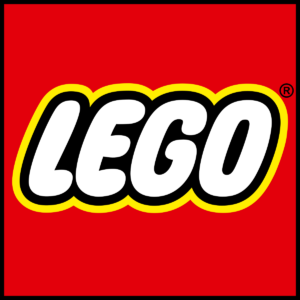
Indirect Competitor: LEGO offers construction sets, appealing to a different segment than Hasbro’s action figures and games.
Strengths: Premium brand image, focus on creativity and open-ended play, strong adult fan base.
Weaknesses: Higher price point compared to some Hasbro products.
Impact on Hasbro: Pushes Hasbro to emphasize educational value and brand storytelling.
3. JAKKS Pacific
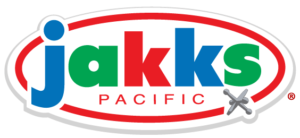
Value Competitor: JAKKS Pacific focuses on licensed toys at lower price points, targeting budget-conscious consumers.
Strengths: Strong licensing deals, ability to quickly adapt to trends.
Weaknesses: Reliant on licensed properties, less brand recognition than Hasbro.
Impact on Hasbro: Creates pressure on Hasbro’s pricing strategy, necessitates focus on core brand value.
4. Spin Master
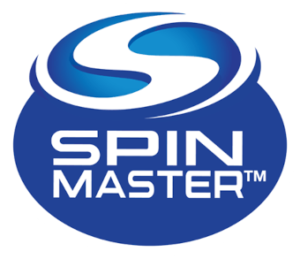
Innovation Competitor: Spin Master is known for innovative and tech-enabled toys, appealing to tech-savvy kids.
Strengths: Strong product development capabilities, focus on interactive and digital play.
Weaknesses: Lacks brand depth compared to Hasbro, relies heavily on a few successful franchises.
Impact on Hasbro: Pushes Hasbro to integrate technology and digital experiences into its toys.
5. Walt Disney Company
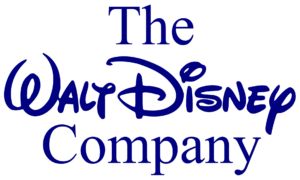
Licensed Content Competitor: Disney owns popular characters and franchises that Hasbro uses for toys.
Strengths: Powerful brand portfolio, control over lucrative intellectual properties.
Weaknesses: Doesn’t directly compete in toy production, relies on licensees like Hasbro.
Impact on Hasbro: Disney negotiates licensing deals, influencing Hasbro’s profit margins.
By understanding these competitors’ strengths and weaknesses, Hasbro can identify opportunities, develop targeted strategies, and maintain its competitive edge in the ever-evolving toy industry.
Also Read: Marketing Strategies and Marketing Mix of Mattel
To read more content like this, subscribe to our newsletter
